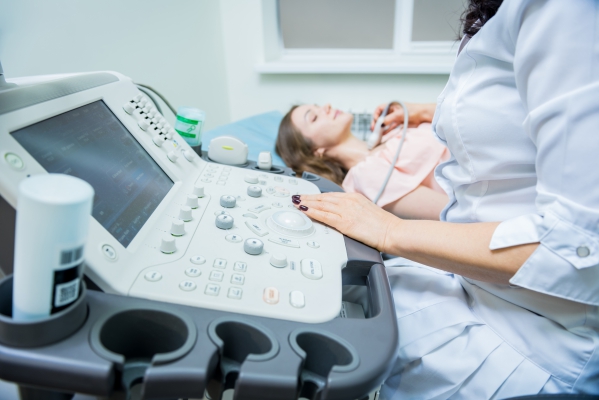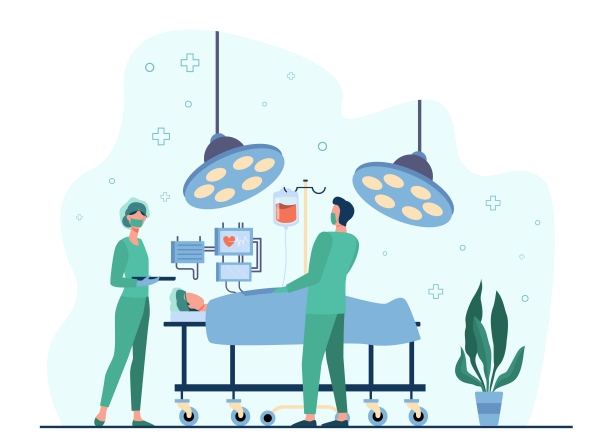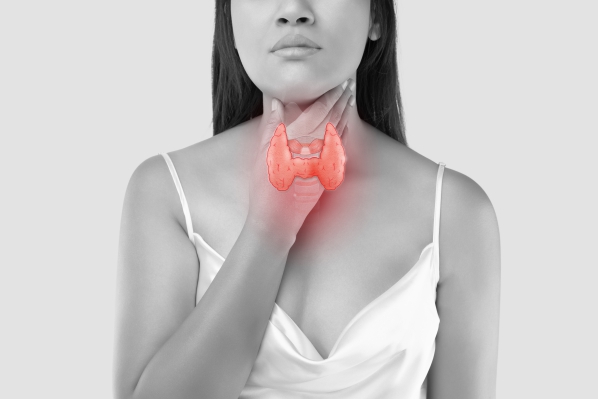What is Graves disease?
Graves disease is an autoimmune disorder causing your body produces antibodies which overstimulate your thyroid gland to produce excessive thyroid hormones resulting in hyperthyroidism. The thyroid gland is gland located in the base of your neck and is responsible for the production of thyroid hormones which are important in many bodily functions. Hyperthyroidism occurs when your thyroid gland produces too much thyroid hormones which results in signs and symptoms such as irritability, heat sensitivity, fatigue and bulging eyes amongst others.
In the United States, the most common cause of hyperthyroidism is Graves disease. Around 30 cases per 100,000 people are affected each year. People having a family history of autoimmune thyroid diseases such as Graves disease, Hashimoto’s disease and postpartum thyroiditis amongst others are at increased risk of developing the condition. Females aged between 30-60 years are more commonly affected by the disease than males.
What are the causes of Graves disease?
Graves disease is an autoimmune disorder. It is characterized by hyperthyroidism due to circulating autoantibodies known as thyroid-stimulating immunoglobulins (TSIs). TSIs bind to receptors on the thyroid gland that causes the thyroid gland to enlarge and increase the production of thyroid hormones. Unfortunately, the exact cause why the condition occurs is still unknown.
Graves disease affects also the eyes and the cause is also not known. This condition is known as Graves ophthalmopathy and results when certain carbohydrates build-up in the muscles and tissues behind the eyes.

What are the risk factors of Graves disease?
There are several factors which may increase your risk of developing Graves disease and these include:
- Sex: Females are more at risk of developing the disease than males.
- Age: Graves disease usually affect people between the age of 20-40 but in females it may affect those between the age of 30-60 years.
- Family history: Having a sibling or parent affected by the disease increases your risk of developing the condition. In addition, having a family history of other autoimmune thyroid conditions also increases your risk of developing Graves disease.
- Pregnancy or recent childbirth: Pregnant women or recent childbirth increases the risk of developing Graves disease in those who have the susceptible genes.
- Cigarette smoking: Cigarette smoking affects your immune system and therefore increases your risk of developing the condition.
What are the signs and symptoms of Graves disease?
The signs and symptoms of Graves disease include:
- Swelling of the thyroid gland (goitre).
- Irritability.
- Heat sensitivity.
- Anxiety.
- Unexplained weight loss.
- Frequent bowel movements.
- Irregular or changed menstrual cycle.
- Reduced libido.
- Erectile dysfunction.
- Fatigue.
- Sleep problems.
- Red and thickened skin on the shin or top of the feet (Graves dermopathy).
- Irregular or rapid heartbeat (arrhythmia).
- Fine tremor of the fingers or hands.

The signs and symptoms of Graves ophthalmopathy include:
- Bulging eyes (exophthalmos).
- Pain or pressure in the eyes.
- Light sensitivity.
- Loss of vision.
- Double vision.
- Red eyes.
- Retracted eyelids.

Making a diagnosis
To make a diagnosis, your doctor will first take a detailed history from you to know more about your symptoms. After the history taking, your doctor will perform a thorough physical examination to look for signs of Graves disease. To confirm the diagnosis, your doctor will order some tests and these include:
- Free T4 and T3 levels: These hormone are produced by the thyroid gland and is elevated in Graves disease.
- Thyroid stimulating hormone (TSH) level: A normal TSH level accompanied by elevated levels of thyroid hormone may point towards Graves disease.
- Thyroid-stimulating immunoglobulins (TSIs): The level of TSIs is almost always positive in Graves disease and is diagnostic.
- Antithyroidal peroxidase and antithyroglobulin antibodies: These antibodies are markers of thyroid autoimmunity and is usually present in Graves disease.
- Liver function test: A liver function test is necessary as antithyroid medications may cause liver toxicity.
- Complete blood count (CBC): A CBC is done as Graves disease is associated with anaemia and a slightly depressed white blood cell count and platelet level.
- Haemoglobin A1C level: Graves disease may increase the level of Haemoglobin A1C and consequently worsen diabetes control.
- Radioactive iodine uptake scan: In Graves disease the radioactive iodine uptake by the thyroid gland is increased. This test involves your doctor injecting radioactive iodine into your bloodstream and then measuring its uptake by your thyroid gland.
- Ultrasound scan: An ultrasound scan of the thyroid gland is done to assess whether it is enlarged. This test is especially useful in pregnant women and those who cannot undergo radioactive iodine scan.
- Computed Tomography (CT) scan r Magnetic Resonance Imaging (MRI) scan: These tests are done if there is presence of exophthalmos (bulging eyes) to determine if your eye muscles or tissues are thickened.

What are the treatments of Graves disease?
The treatments of Graves disease include:
- Radioactive iodine therapy: As your thyroid gland requires iodine to produce thyroid hormones, your doctor will give you radioactive iodine which you will take orally. As the radioactive iodine reaches your thyroid gland, the radiation destroys the overactive thyroid cells over time. This treatment is not recommended in pregnant women, breast feeding women and people having moderate to severe eye problems.
- Anti-thyroid medications: These medications interfere with the production of thyroid hormones by your thyroid glands and examples include methimazole and propylthiouracil. The first choice of medication is usually methimazole as propylthiouracil may cause liver disease.
- Beta-blockers: These medications block the effects of thyroid hormones on the body and examples include propranolol and metoprolol.
- Surgery: In certain cases, surgery is done to remove part or all of your thyroid gland and these procedures are known as subtotal thyroidectomy and thyroidectomy respectively. After surgery, you will be required to supply your body with normal amounts of thyroid hormones via medications.

What are the complications of Graves disease?
If Graves disease is left untreated, the following complications may ensue:
- Thyroid storm: This complication is also known as thyrotoxicosis or accelerated hyperthyroidism. It is life-threatening complication of Graves disease. Signs and symptoms of a thyroid storm include fever, sweating, diarrhoea, vomiting, irregular heartbeats, seizures, jaundice (yellowing of the skin and whites of the eyes), coma and severe low blood pressure.
- Pregnancy problems: Graves disease may cause pregnancy complications such as poor fetal growth, preterm birth, miscarriage, preeclampsia (high blood pressure during pregnancy) and maternal heart failure.
- Bone problems: Graves disease may lead to weak and brittle bones which is known as osteoporosis. This occurs as excessive thyroid hormones affects your body’s ability to incorporate calcium into your bones.
- Heart problems: Graves disease may cause irregular heartbeats (arrhythmia) and heart failure as it damages your heart muscles.

Expectations (prognosis)
Graves disease is a condition that affects your health as well as your appearance. It is very important to seek medical advice early in order to prevent complications. Unfortunately, in many cases the state of hyperthyroidism may recur despite taking medications.

Source:
J. Alastair, I. and Simon, M., 2016. Davidson's Essentials of Medicine. 2nd ed. London: ELSEVIER.
Parveen, K. and Michael, C., 2017. Kumar & Clarks Clinical Medicine. 9th ed. The Netherlands: ELSEVIER.
Yeung, S., 2020. Graves disease.
Ellis H. Robert Graves: 1796-1852. Br J Hosp Med (Lond). 2006 Jun. 67(6):313.


